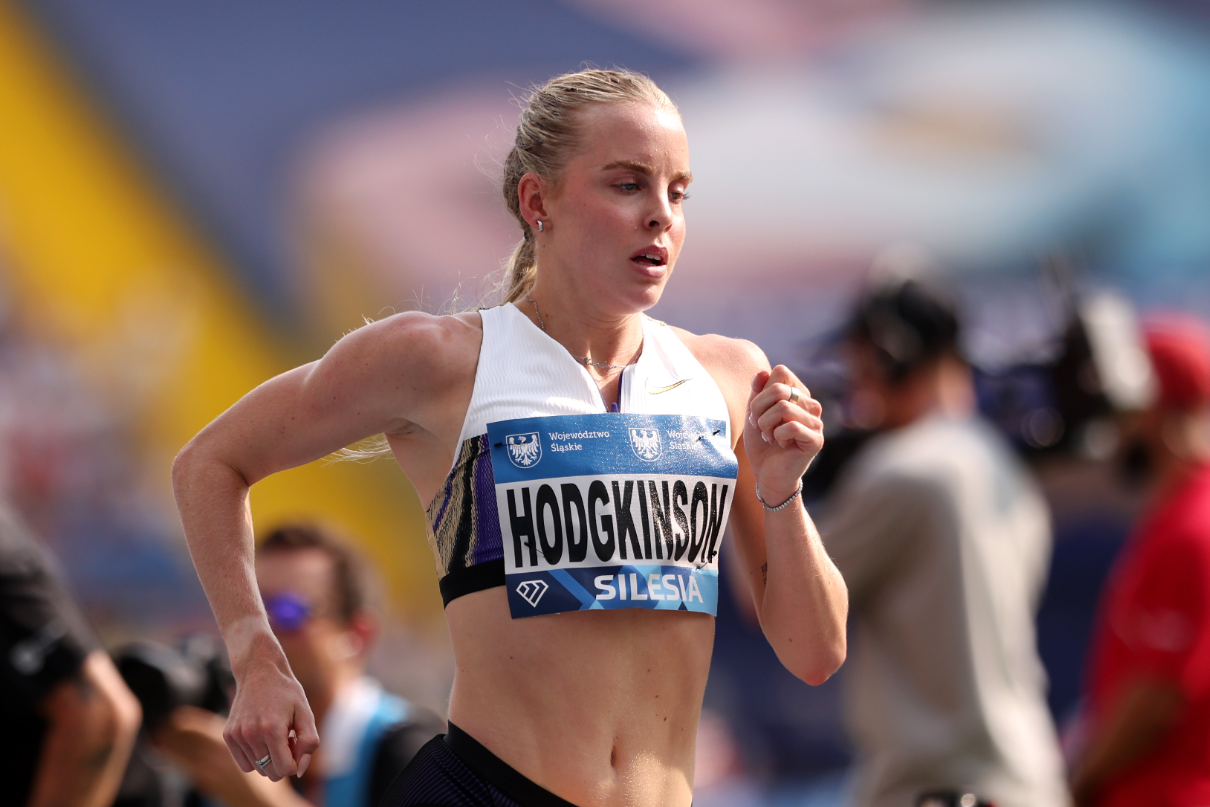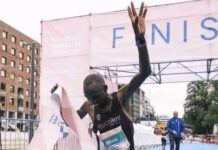© Copyright – 2025 – Athletics Illustrated
It is well documented that defending Paris Olympic 800 metre gold medallist Keely Hodgkinson from Great Britain raced a fast comeback during the Silesia Diamond League meeting in Chorzów, Poland, over the weekend. She ran 1:54.74 for the win, meet record and 2025 world-leading time.
Her personal best is marginally faster at 1:54.61, set during the 2024 London Diamond League meet last July.

As far as comebacks go, it was a foreshadowing of her possibly winning her first world championship gold medal. Prognosticators are predicting that it will happen. Breaking the very old world record is on many people’s minds, too. Mid-September awaits.
Hodgkinson’s injuries were overstated
“[There was] 12 months of pent-up frustration that went into that run,” shared coach Trevor Painter in an email exchange with Athletics Illustrated Magazine.
Speculation about the severity of the diagnosis of Hodgkinson’s hamstring injury is making the rounds in the media. Painter confirmed that the diagnosis was likely more dramatic than what it was.
When asked, Painter replied, “Yes, the Grade 3 is a misprint; they were both Grade 2; however, I feel the last issue was even less, as symptoms had settled in 48 hours!”
When issues subside within 48 hours, it is unlikely to be a tear at all.
“So, to me it was more of a neural spasm, but doctors deny this despite the physical presentation.”
Painter added, “She has only been in spikes for six weeks and we haven’t really done any speed work, nothing faster than 55-second 400m pace anyway.”
While a 55-second pace is not ripping fast in Hodgkinson’s world, it is fast. Perhaps the pace is easy enough not to put pressure on the hamstrings. Her personal best is 51.61 over the distance. She has said in the past that she would like to improve that time. So that she is in the range of her contemporaries, like Athing Mu of the US with her 49.57 or Mary Moraa of Kenya with her 50.38.
While Hodgkinson has not done much in the way of speed work, she has maintained her aerobic base. Yet with relatively low mileage. While it is common for 800m runners to train during a base phase of over 50 miles (80kms) and over 60 and sometimes 70-plus miles (114kms), she has run much less. She runs half that; she always has, including leading up to her Tokyo Olympic silver medal performance at age 19.
There are few Peter Snells or Sebastian Coe’s running 90-100 miles (150-162 km) per week during an eight-week, off-season base phase.
The 23-year-old, according to Painter, continues to run “30-35” miles per week. That is 50 to 58 km per week. Or half or a third of what some other world-class middle-distance runners will put in.
She is naturally aerobically gifted. In none of her races does she drop her kick to a pure sprint. She can take in and use oxygen after 600m where she maintains speed, while her competitors mostly struggle to the finish.
The current world record
Jarmila Kratochvílová from the former Czechoslovakia continues to hold the world record of 1:53.78. She set it back in 1983 in München (Munich). She has long been suspected of taking performance-enhancing drugs.
The second-fastest time in history was set in Moscow by Soviet runner Nadezhda Olizarenko in 1980, which Kratochvílová bettered. The time was 1:53.43. Two performances by South Africa’s Caster Semenya are faster than Hodgkinson’s best at 1:54.25 and 1:54.60. Semenya, while never suspected of doping, lives with DSD or differences in sexual development. She naturally produces very high levels of the male hormone testosterone. It is believed to aid in her ability to race at an international level in the middle distances.
Hodgkinson will be up against the same quality of field as she has the past two Olympic Games during the 2025 Tokyo World Athletics Championships. The meet will take place September 13-21, 2025.















Thanks, Chris! Just the best.
Thanks, Coach. Sometimes, we just miss the obvious and correct the minutae.
1:54
Comments are closed.